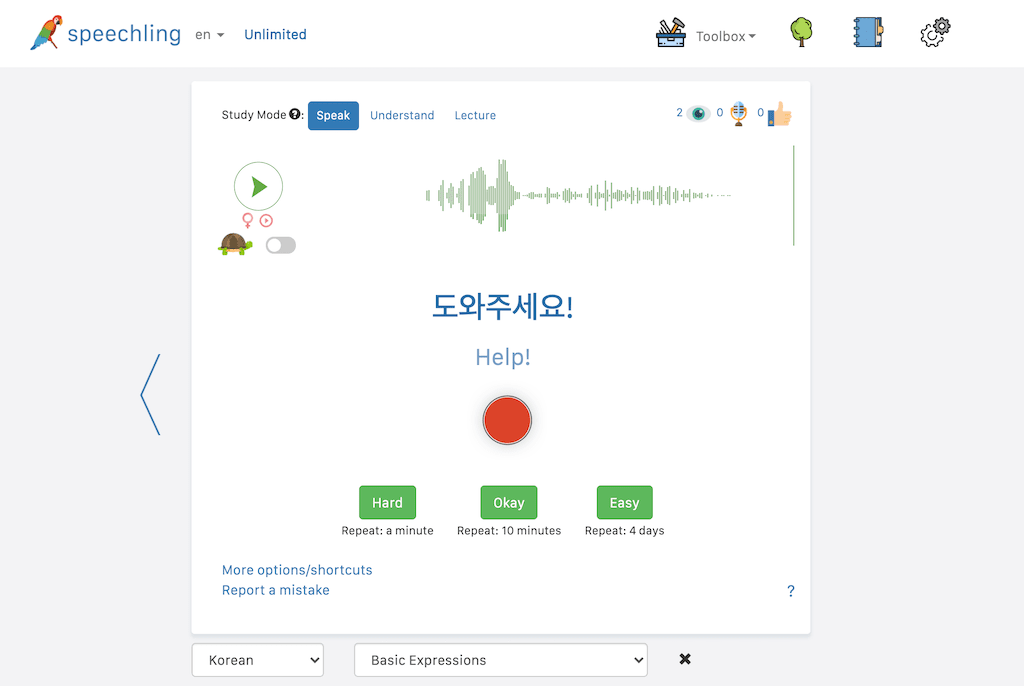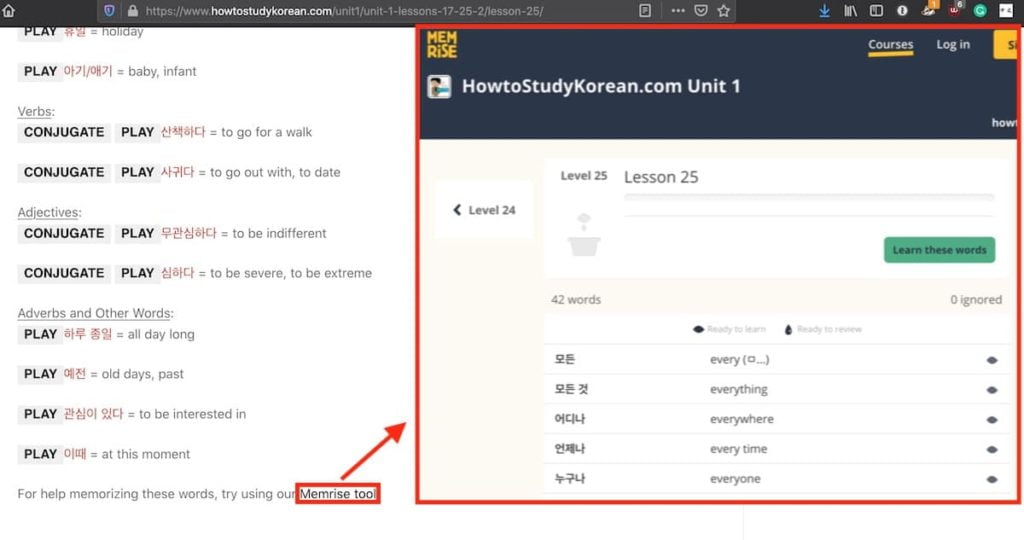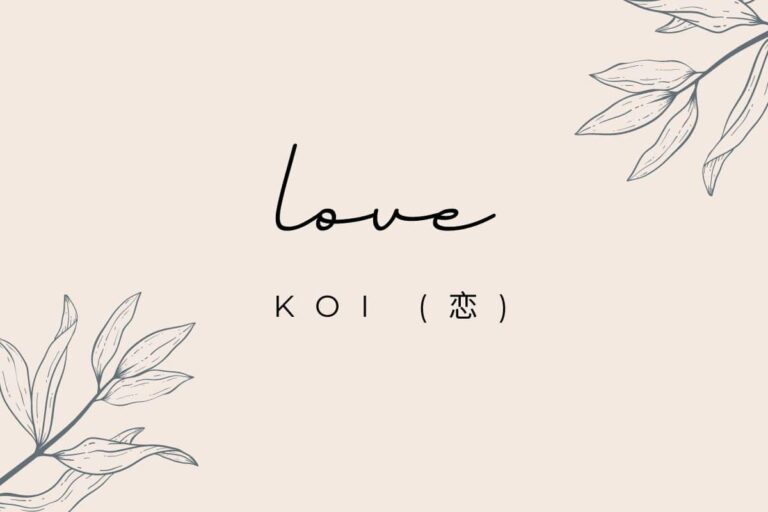Korean Vocabulary — The Four Best Resources
We scoured the internet to find the very best resources to build Korean vocabulary, and here they are, as well as some guidance on using vocabulary lists in general.
There are lots of ways of attacking language learning, from building listening skills, speaking more, understanding grammar, and just piling on vocabulary.
Adding in vocabulary is the most boring one, but it is just as important as the others. After all, without a bank of words and phrases from which to draw, you won’t be able to say anything.
It’s hard to understate the importance of vocabulary. You already know how important it is. When you are interested in a language, you start wondering how you say the words that are important to you in that language. How do you say “watermelon”? “Apple”? “Hello”?
So the below are resources that we use or have used extensively. This isn’t some random list of websites. I can vouch for these Korean vocabulary sources.

Since we won’t be travelling to Korea for a while until travel bans and quarantine rules are more slack, we’re doing what we can to learn Korean from afar — currently, AUstralia.
It’s going pretty well… I think after six months of somewhat casually studying for an hour or two a day (around my normal life) I’m at “low intermediate” level. A long way to go, to be sure, but I’m happy!
You might also like these other articles we have about learning Korean:
- A Simple Guide to Korean Honorifics
- Korean Restaurant Phrases — Phrases for Eating Out in Korea
- Korean vs Chinese — Complete Analysis of Similarities and Differences
- Pretty in Korean: A Guide to Complimenting in Korean
- Learning BJJ / MMA in Korean — A Glossary
Contents
General Word of Caution about Vocabulary Lists
Let me be up front: we absolutely don’t recommend learning vocabulary in isolation. You ALWAYS need example sentences and context.
If you Google “Korean vocabulary list” you’ll find various lists that are called things like 100 words you must know, 2,000 TOPIK (the Korean language test) Korean Words to Memorise, Ultimate List of 5 Million Adjectives, and so on.
I’ve never used these, and suggest you don’t, either.
There’s one simple reason: words don’t exist in a vacuum. You can’t just go learn vocabulary and sound natural.
For example, if I told you the word “inclement” is an adjective meaning meant “unpleasantly cold and wet”, then you might say “Man! I bought an inclement piece of salmon at the market” or “I stepped in the puddle and my socks are all inclement.” Unfortunately, because you learned the word “inclement” in a vacuum, you didn’t learn that it can only describe one thing: weather.
Myriad similar situations exist in Korean. There are set phrases for “what is your name”, which literally translate to “Name-the what is?” and “Name the how is becomes (formal)?”
To make sentences like those, you can’t just learn words.
That’s why we always recommend either a) learning Korean vocabulary words in context only, or b) only learning complete sentences.
If you find a big table of adjectives, nouns, or whatever — ignore it.
The only time I’d say it’s OK to learn Korean vocabulary without any sentence concept is literally learning lists of things like fruit, vegetables, and items in the house.
You tend to learn those vocabulary items with very focused lists. I’ll share those too at some point.
But below are some general resources of Korean vocabulary that you can use for building up your arsenal of words and sentences.
Anki Korean Vocabulary Sentences by Evita
Anki is one of our favourite language learning tools (here’s our guide to using Anki for language learning like a pro). It’s effective, it’s used by everyone, and it’s free (mostly; the iOS one isn’t).
There are a few decks that Evita has made, but her Grammar Sentences deck is the one I’m recommending here.
Here are some awesome things about Evita’s Korean vocabulary deck:
- There are 2000 notes in it (each with a card, or more if you change the structure)
- The cards have audio pronunciation
- Each card introduces a new grammar concept OR a new word
- It’s ordered roughly from most common –> least common. So you won’t waste time learning obscure words early on.
- It includes references to Chinese characters (Hanja, still in common usage in Korea)
It’s not a pure vocabulary deck. Actually, Evita has published one. But I found it unusable because I had no idea how to use the words in sentences. Again — vocabulary words don’t exist in isolation.
Korean Vocabulary Sentence Banks with Speechling
Learn sentences; not words. That’s what sentence banks are about.
Don’t learn “tired”. Learn “I’m tired”. And “You look tired”.
Or instead of the word “to help”, 돕다, learn how to say “Help me!”

There are two really great sentence bank apps that teach you sentences rather than words — Glossika and Speechling. For most purposes, we prefer Speechling, just because for most people, it’s free!
In the free version of Speechling, you get access to all the sentences for one language, and up to 35 reviews of your pronunciation by a real human teacher a month. You also get full access to the apps.
Or for a paltry $20 a month you get unlimited reviews by teachers, offline options, and the ability to switch languages.
How do they do this? Speechling is a non-profit company. If you’d like to read more about it, check out our full overview of Speechling.
Try Speechling – It’s Free (for one language)
Sign up to Speechling with the link below. Get access to all sentences for one language, review from a real tutor, and their apps — for free. The paid version lets you get unlimited access and offline mode.
Korean vocabulary words and sentences on Glossika
Our other favourite tool for learning vocabulary in any language (including Korean, and 60+ other languages) is Glossika.
It works like Speechling, but it’s a bit different. Of the two, Glossika is far easier to use. You sign up, choose your language, do a test, and get started.
By contrast, in Speechling (which is a newer and smaller company, to be fair), it can be a bit confusing navigating around and figuring out what to learn.
Because we’ve used Glossika for more languages (Swahili, Hebrew, Persian, Korean, and Egyptian Arabic… and bits of others), it’s easier to recommend.
There’s no free version, but you can check it out for seven days and decide if you want to commit.
Try Glossika for a Week for Free
Try Glossika’s method of teaching language through thousands of sample sentences. Learn languages by sentences spoken by native speakers in over 60 languages.
The Memrise decks on Howtostudykorean.com

I like howtostudykorean.com as one of the best resources to learn Korean grammar, lesson by lesson.
But it’s also super convenient how they put vocabulary lists for all their lessons on Memrise.
I’m an Anki nerd. But if you’re really into Memrise (or just into taking advantage of free lists out there), this is super convenient.
Best of all… most of the really valuable content on howtostudykorean.com is free!
The downside of the Memrise lists is that they don’t have the example sentences that are plentiful on the howtostudykorean.com website.
I’d suggest learning the content like this:
- Read and study the lesson on the website.
- Play the audio for all the words in full sentences to learn the context.
- Start studying the words without context on Memrise.
- If necessary, make modifications to the flashcards on Memrise to add context.
That way, you can add some much-needed sentence context to each card.






